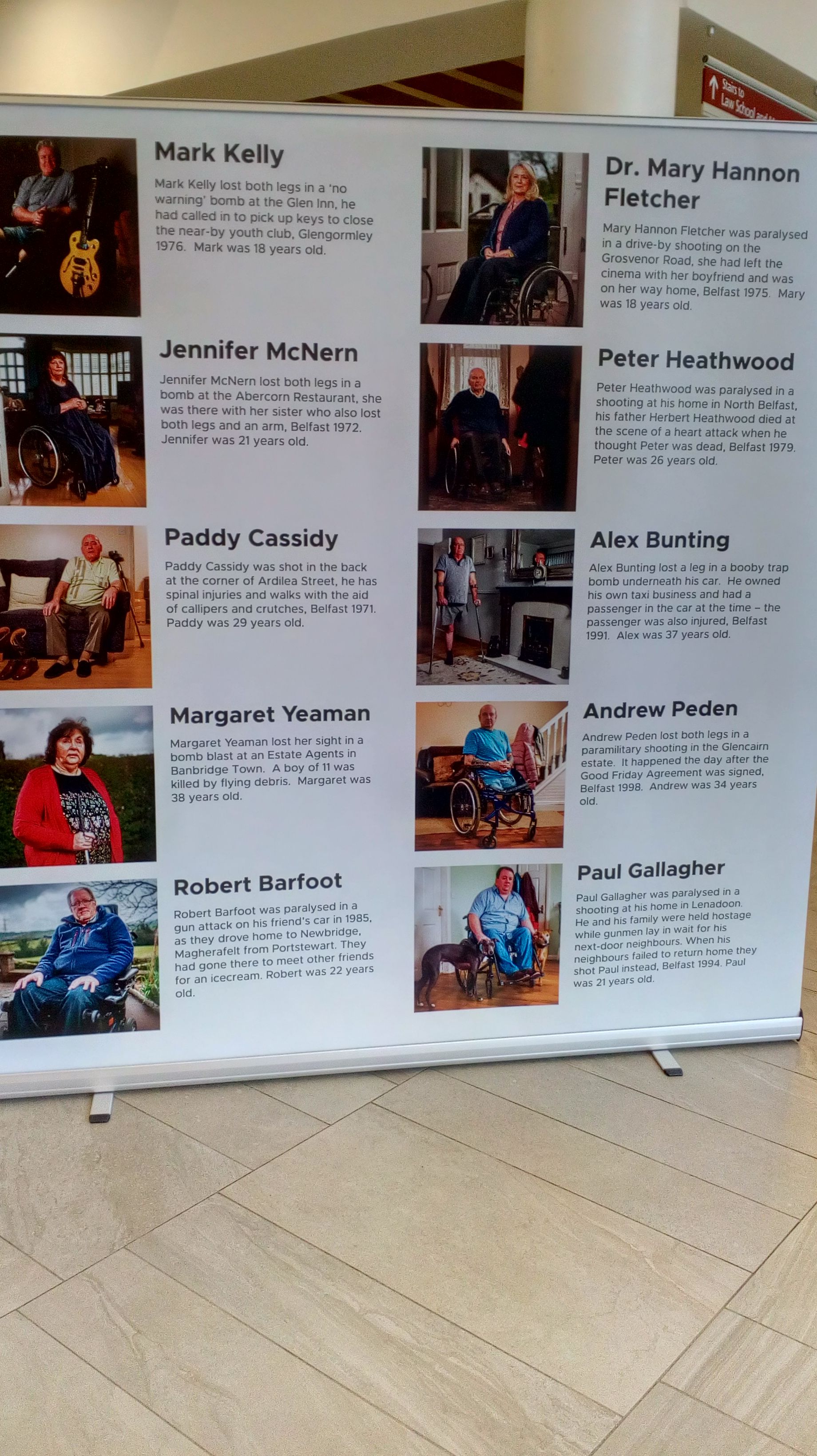Who is a victim?
When I was at Queen's having a coffee with Marek, there was an exhibit on about victims of the Troubles. Each of the people pictured below lost arms, legs, eyesight to bombs. One woman had just seen a film with her boyfriend. One had just bought an ice cream with his friends. One was in his shop when the windows were blown in.
Various commissions and inquiries have rceommended that victims of the troubles be paid a special pension as reparation for the violence. Many of them live on a social security payment no different from anyone else out of work--a payment that Austerity Britain is looking to minimise.
From a Queen's professor: "Reparations are meant to alleviate the daily suffering of victims who continue to live with the consequences of the past by officially acknowledging their harm and providing appropriate remedies. For the State such reparations, even for violence committed by terrorist groups, are about ensuring social solidarity with the victims, that as a society we empathise with victims’ plight and seek to ease their suffering in building a shared future.

As in everything else Northern Irish, it isn't simple. The reason the Troubles pension was never approved was dispute over who is a victim? If you served with a paramilitary unit and were injured, do you get a pension? If you are the widow/child of same, do you get a pension? If you lost a leg while building a bomb, do you qualify? A getaway driver for the IRA sued the government and won. British soldiers had killed the four IRA bombers and shot him as well, leaving permanent injuries. He won 75,000 pounds when it was found the soldiers used excessive force in shooting him. All of us who lived through the Troubles don't have a lot of sympathy for combatants on either side. But Luke Moffett, the professor quoted above, wrote something about the nuances of Northern Ireland violence. Excessive force by the British was a common feature. So, as in all things, it isn't black and white.
Feb. 8